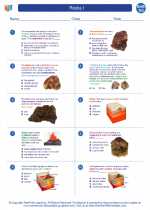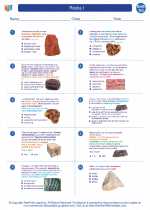Cobalt
Cobalt is a chemical element with the symbol Co and atomic number 27. It is a hard, lustrous, silver-gray metal that is commonly found in combination with other elements in the Earth's crust. Cobalt has many industrial and commercial uses, and it is an essential component in the production of various alloys, magnets, and batteries.
Physical and Chemical Properties
Cobalt is a relatively rare element, constituting only about 0.0029% of the Earth's crust. It has a melting point of 1,495 degrees Celsius and a boiling point of 2,900 degrees Celsius. Cobalt is ferromagnetic, meaning it is attracted to magnets and can be magnetized. In terms of its chemical properties, cobalt is relatively stable in air and does not react with water. However, it does react with acids to form cobalt salts.
Uses of Cobalt
Cobalt has a wide range of industrial and commercial applications. Some of the key uses of cobalt include:
- Alloys: Cobalt is commonly used in the production of high-strength alloys, such as those used in jet engines and gas turbines.
- Magnets: Cobalt is an essential component in the production of permanent magnets, particularly in applications where high magnetic strength is required, such as in electric motors and generators.
- Batteries: Cobalt is a critical component in the production of lithium-ion batteries, which are used in electric vehicles, smartphones, and other electronic devices.
- Pigments: Cobalt compounds are used as pigments in ceramics, glass, and paints, providing a distinctive blue color.
- Catalysts: Cobalt-based catalysts are used in chemical reactions for the production of various industrial chemicals and pharmaceuticals.
Environmental and Health Considerations
While cobalt has numerous industrial applications, there are also environmental and health considerations associated with its use. Cobalt mining and processing can lead to environmental contamination, and prolonged exposure to high levels of cobalt can have adverse health effects on humans, including respiratory issues and potential toxicity. As a result, proper safety measures and environmental regulations are essential in the handling and disposal of cobalt-containing materials.
Study Guide
To study and understand the topic of cobalt, consider the following key points:
- Learn about the physical and chemical properties of cobalt, including its atomic structure, density, and reactivity with other elements.
- Explore the industrial uses of cobalt and its significance in various applications, such as in the production of alloys, magnets, batteries, and pigments.
- Examine the environmental and health considerations associated with cobalt, including its potential impact on the environment and human health.
- Understand the importance of safety measures and environmental regulations in the handling and disposal of cobalt-containing materials in industrial and commercial settings.
- Consider the future prospects and challenges related to cobalt, particularly in the context of sustainable resource management and the development of alternative materials and technologies.
By exploring these aspects of cobalt, you can gain a comprehensive understanding of this important element and its role in various scientific, industrial, and environmental contexts.
.◂Earth Science Worksheets and Study Guides High School. Rocks I

 Worksheet/Answer key
Worksheet/Answer key
 Worksheet/Answer key
Worksheet/Answer key
 Vocabulary/Answer key
Vocabulary/Answer key
 Vocabulary/Answer key
Vocabulary/Answer key
 Vocabulary/Answer key
Vocabulary/Answer key
